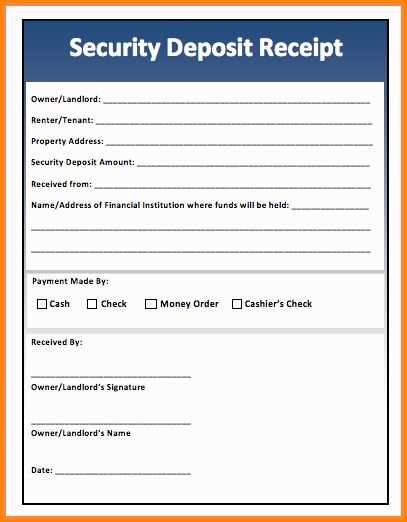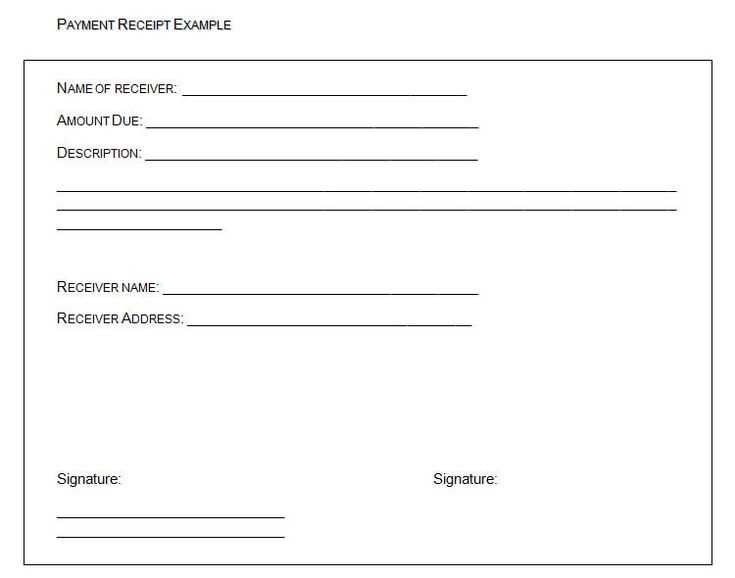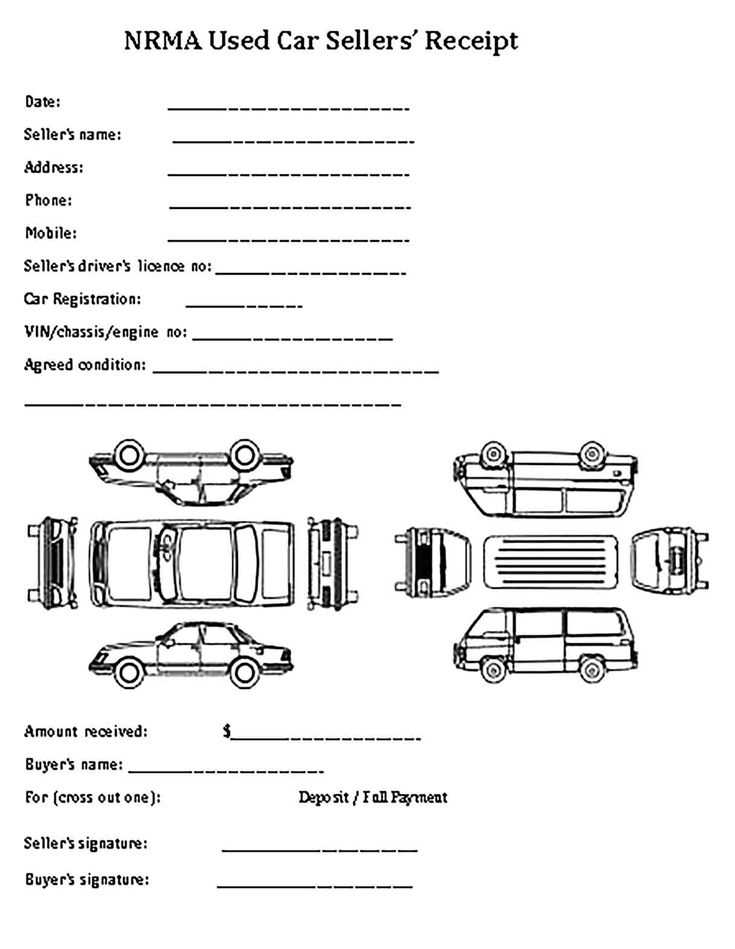
Key Elements of a Car Payment Deposit Receipt
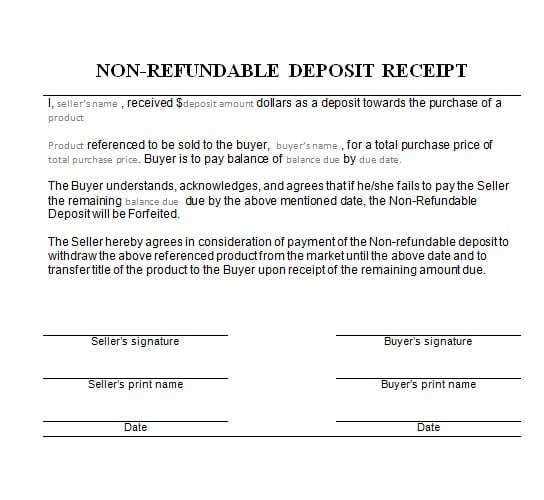
A car payment deposit receipt serves as a proof of payment made toward the purchase of a vehicle. It helps both the buyer and the seller keep track of transactions and can be crucial in case of disputes. Here’s what to include in your template:
- Receipt Number: Assign a unique number to each receipt for easy tracking.
- Seller Information: Include the full name, business name (if applicable), and contact information of the seller.
- Buyer Information: The full name and contact details of the buyer should also be listed.
- Vehicle Details: Mention the make, model, year, VIN (Vehicle Identification Number), and any relevant features of the car.
- Deposit Amount: Specify the exact deposit amount paid by the buyer, including the payment method (e.g., cash, check, credit card).
- Payment Date: Clearly state the date when the payment was made.
- Remaining Balance: Indicate how much is left to pay toward the full price of the vehicle.
- Agreement Terms: Include any terms regarding the deposit, such as whether it’s refundable or non-refundable.
Template Example

Below is a simple car payment deposit receipt template that you can customize:
Receipt Number: #12345 Date: [MM/DD/YYYY] Seller Information: Name: John Doe Business Name: ABC Motors Address: 1234 Car Dealer St, City, State, ZIP Phone: (123) 456-7890 Buyer Information: Name: Jane Smith Address: 5678 Buyer Ave, City, State, ZIP Phone: (987) 654-3210 Vehicle Details: Make: Toyota Model: Corolla Year: 2020 VIN: 1HGBH41JXMN109186 Deposit Amount: $2,000 Payment Method: Credit Card Remaining Balance: $15,000 Agreement: This deposit is non-refundable and applies towards the total purchase price of the vehicle. Seller's Signature: ______________________ Buyer's Signature: ______________________
How to Customize Your Receipt
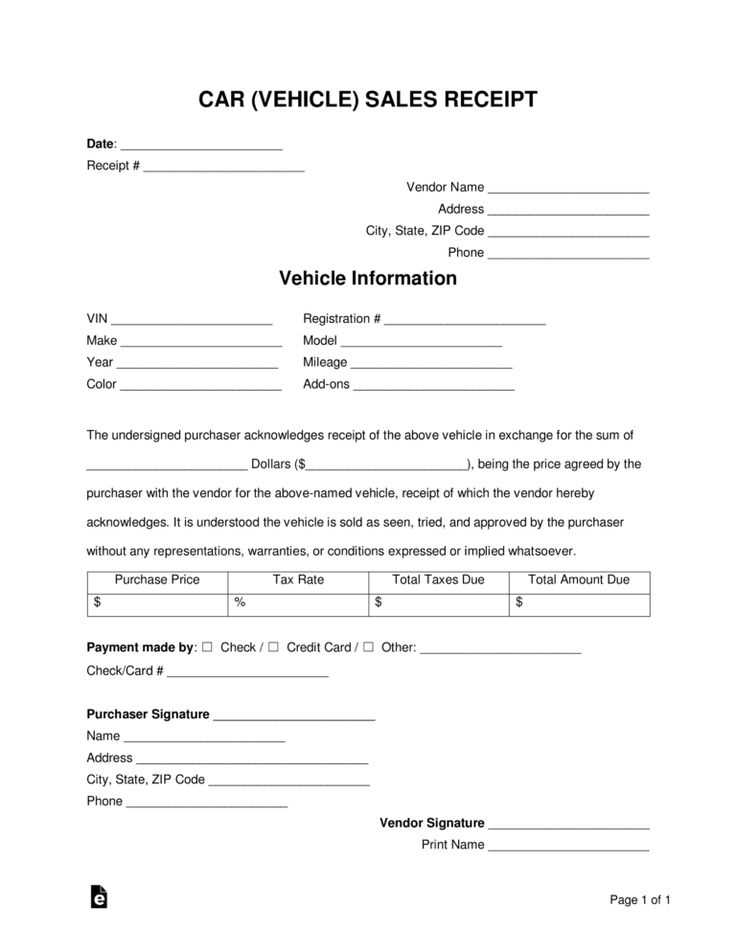
To make your car payment deposit receipt accurate, replace placeholders like [MM/DD/YYYY] with real data. Adjust the vehicle details and payment amount to match the transaction specifics. Be sure to verify all contact information for both parties, ensuring a smooth communication process in the future.
By following this template, both the buyer and seller will have a clear, well-documented record of the deposit made toward the vehicle purchase.
Car Payment Deposit Receipt Template
How to Create a Car Payment Deposit Receipt
Essential Information to Include in a Receipt
Common Errors to Avoid When Issuing a Deposit
Begin with including the date of the transaction, which establishes the timeline of the payment. Include the buyer’s full name and address to ensure proper identification. The seller’s details, such as name and business address, are equally important to avoid any confusion later.
State the exact amount of the deposit paid, along with the method of payment (e.g., check, bank transfer, credit card). It’s useful to also mention whether this deposit is refundable or non-refundable to avoid future disputes.
Clarify the terms of the deposit, including whether it goes towards the full purchase price of the car or is a standalone payment for securing the vehicle. Adding a description of the vehicle–make, model, year, and VIN–helps tie the deposit to the specific car in question.
List the agreed-upon payment schedule for the remaining balance, if applicable. This prevents ambiguity about when the buyer is expected to complete the payment.
One key error to avoid is leaving out any of the involved parties’ contact details, which could make future communications more difficult. Don’t forget to include both the buyer’s and seller’s signatures to confirm the agreement was made.
Make sure all fields are filled in correctly and double-check spelling, especially the vehicle details. This simple step can save a lot of trouble later, especially in the event of a legal dispute.
